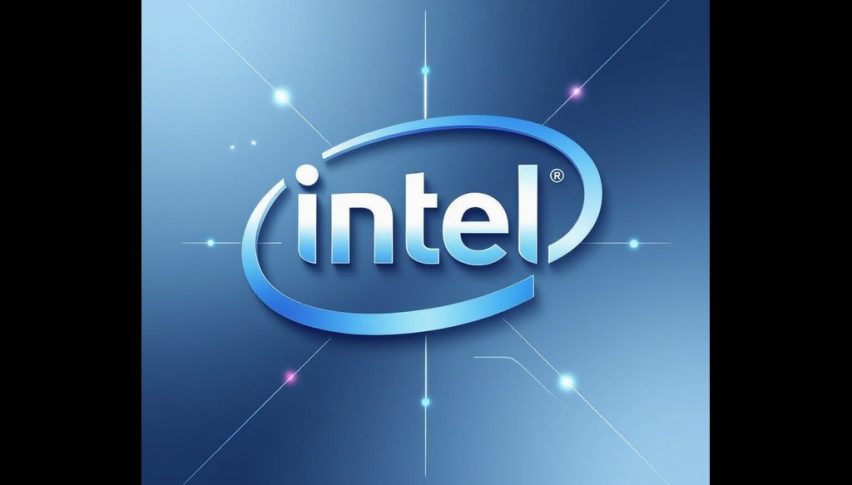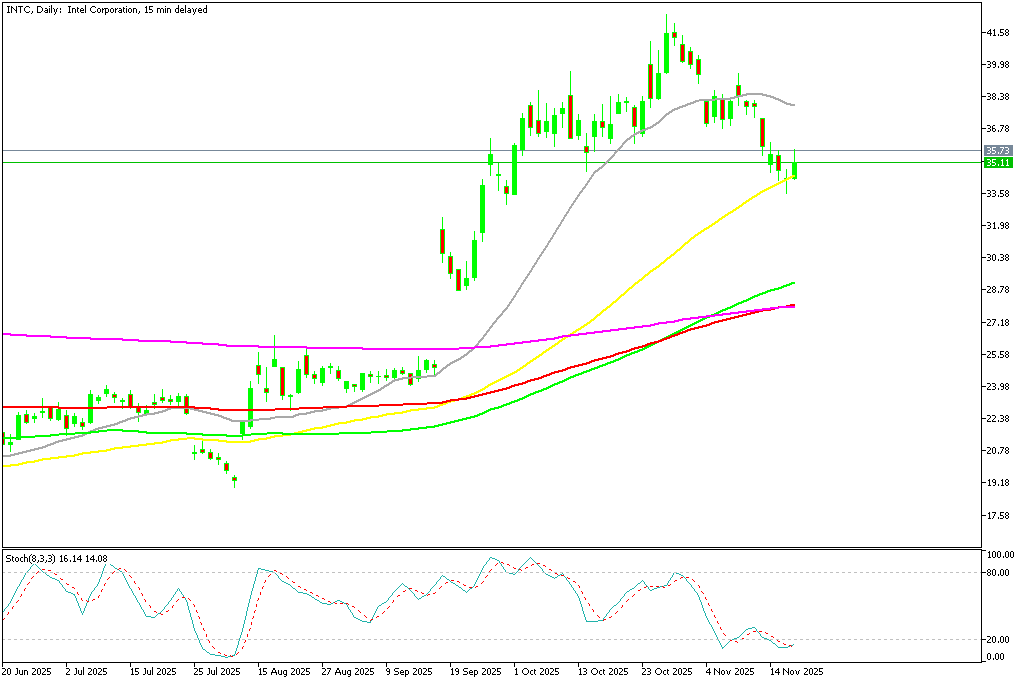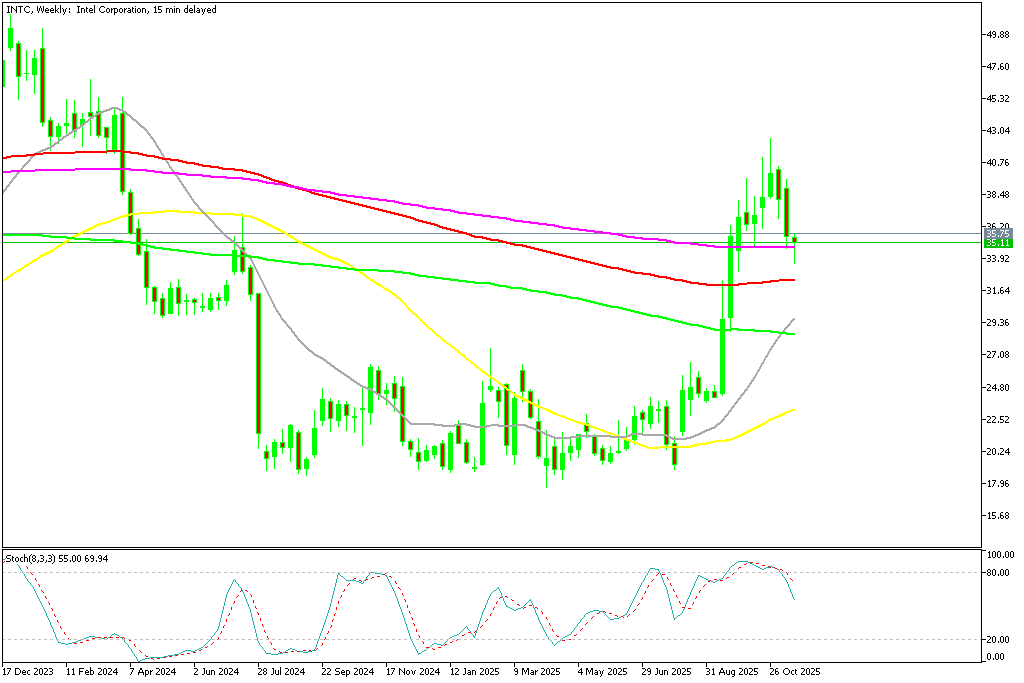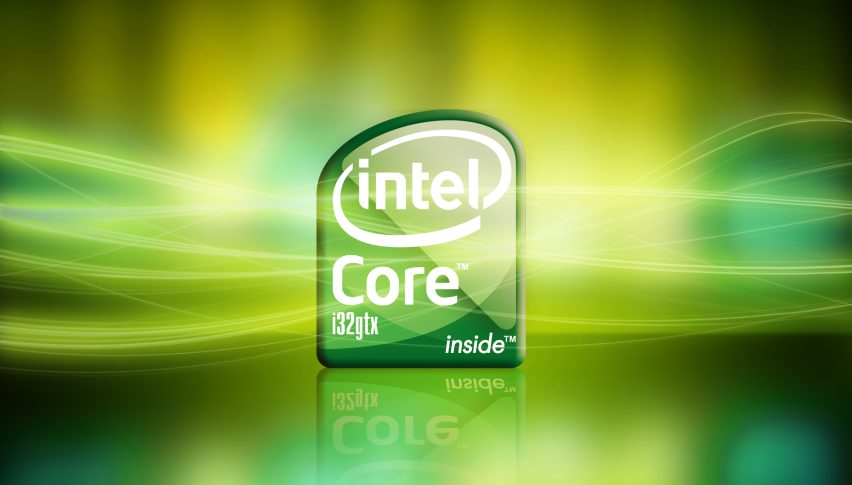Intel Stock INTC Resumes Upside as Market Confidence Returns After Nvidia Earnings
Intel steadied after early-week volatility as strong support, encouraging leadership moves, and favorable policy momentum reinforced...

Quick overview
- Intel has stabilized after early-week volatility, supported by strong leadership moves and favorable policy momentum.
- The company's stock rebounded from a dip below $35, aided by positive sentiment from Nvidia's strong Q3 report.
- Recent leadership changes, including CEO Lip-Bu Tan overseeing key groups, signal a renewed commitment to innovation and development.
- Intel's strategic partnerships with major tech players highlight its rising importance in the global semiconductor landscape.
Intel steadied after early-week volatility as strong support, encouraging leadership moves, and favorable policy momentum reinforced confidence in the company’s long-term turnaround story.
Intel Regains Ground as Volatility Fades and Confidence Rebuilds
Intel (NASDAQ: INTC) moved through a turbulent start to the week, briefly succumbing to the broader market pullback triggered by shifting interest-rate expectations and the temporary chill in AI-related sentiment. Shares dipped below $35 and touched $33.50 on Tuesday, reflecting concerns tied to sector-wide downgrades and speculation around AI procurement trends.
Market Sentiment Tests – The 50 Daily SMA Holds
Yet the weakness proved short-lived. An intraday doji formation signaled stabilizing sentiment, and by Wednesday Intel had reclaimed the $35 mark, climbing further in after-hours trading as Nvidia’s strong Q3 report lifted tech stocks across the board. The quick recovery highlighted that the underlying confidence in Intel’s strategic revival remains intact, even amid broader market hesitation.
Technical Resilience Offers Encouraging Signals
Intel’s advance to $42.50 earlier this month marked its highest level in more than a year and underscored the strength of its multi-month recovery. The rally briefly paused at this major technical barrier, prompting a controlled pullback as investors reassessed risk across the semiconductor space.
Importantly, the retreat found support at the 50-day simple moving average, reinforcing the level as a dependable floor. Despite headlines suggesting Intel was not included in OpenAI’s immediate hardware plans, the market’s reaction was more emotional than fundamental. Intel’s expansion across advanced nodes, server platforms, and AI-optimized architecture remains firmly underway, supported by growing engagement from enterprise and government customers.
Meanwhile, AMD—often presented as Intel’s closest rival—is feeling the effects of slowing momentum. Though AMD’s shipments outpaced Intel’s in Q3 2025, several analysts now believe the company may be approaching a cyclical peak. Margins have tightened, inventories remain delicate, and enthusiasm around its data-center and AI products has moderated. Against this backdrop, Intel appears increasingly aligned with long-term structural demand, particularly around U.S. manufacturing and secure supply chains.
Leadership Shifts Reinforce Commitment to Innovation
Intel’s announcement on November 10 that CEO Lip-Bu Tan will directly oversee the Chip and Advanced Technologies Groups added a new wave of optimism. Rather than signaling disruption, the shift has been interpreted as a sign that Intel’s leadership is doubling down on core innovation and accelerating internal development following the departure of CTO Sachin Katti to OpenAI.
This renewed focus coincides with the strongest U.S. policy support Intel has ever received. Under the CHIPS Act, Intel has been awarded nearly $16 billion in incentives and financing—firm evidence of Washington’s goal to restore domestic semiconductor leadership. This policy alignment has played a crucial role in the stock’s dramatic rebound from its August lows below $19.
AMD, by comparison, faces broader strategic questions. With manufacturing outsourced and the competitive landscape intensifying, maintaining its recent pace of gains may become increasingly challenging.
A Supportive Technical Base for Long-Term Growth
Intel’s climb toward $42.50 encountered the 100-month SMA, a level historically difficult to break on the first attempt. The subsequent pullback toward the $34–$35 region aligns with several reinforcing support levels, including the 200-SMA on the monthly chart. Dip buyers have already stepped in, and analysts continue to view the $30–$32 area as a strong accumulation zone should market volatility re-emerge.
INTC Chart Weekly – The 200 SMA Turns Into Support
A decisive move above $42.50 remains the next major upside objective and could open the path to a broader long-term breakout.
Strategic Partnerships Highlight Intel’s Rising Global Importance
Despite short-term fluctuations, Intel continues to draw interest from major technology players. Industry reports suggest that companies such as Apple, SoftBank, Nvidia, and other global leaders are exploring expanded partnerships with Intel to secure next-generation supply chains and collaborate on advanced chip technologies.
These discussions reflect growing recognition that Intel’s integrated manufacturing model and U.S.-based production capacity are key differentiators in an increasingly unpredictable global environment. AMD’s heavier reliance on external fabs leaves it more exposed to supply bottlenecks and competitive pricing pressures.
- Check out our free forex signals
- Follow the top economic events on FX Leaders economic calendar
- Trade better, discover more Forex Trading Strategies
- Open a FREE Trading Account



